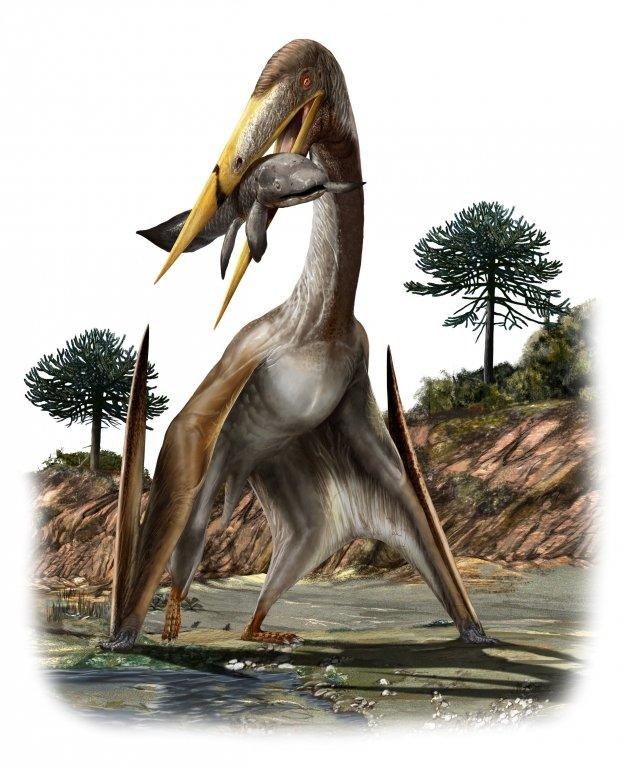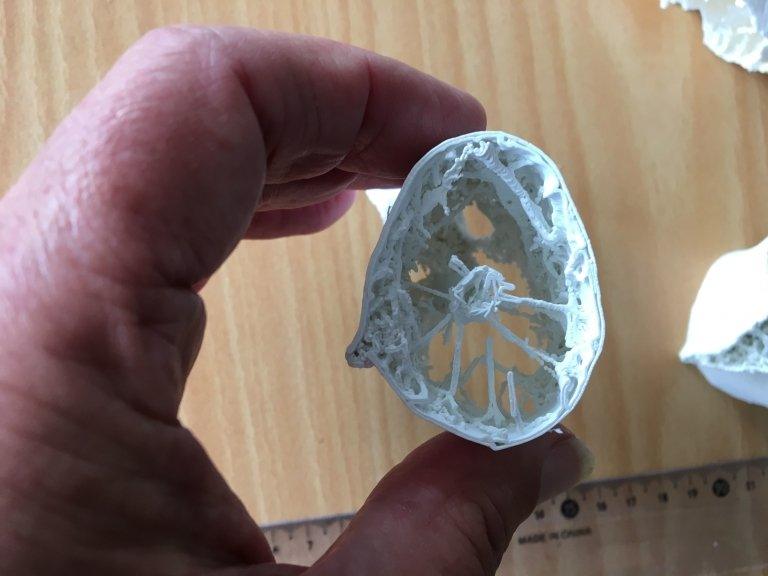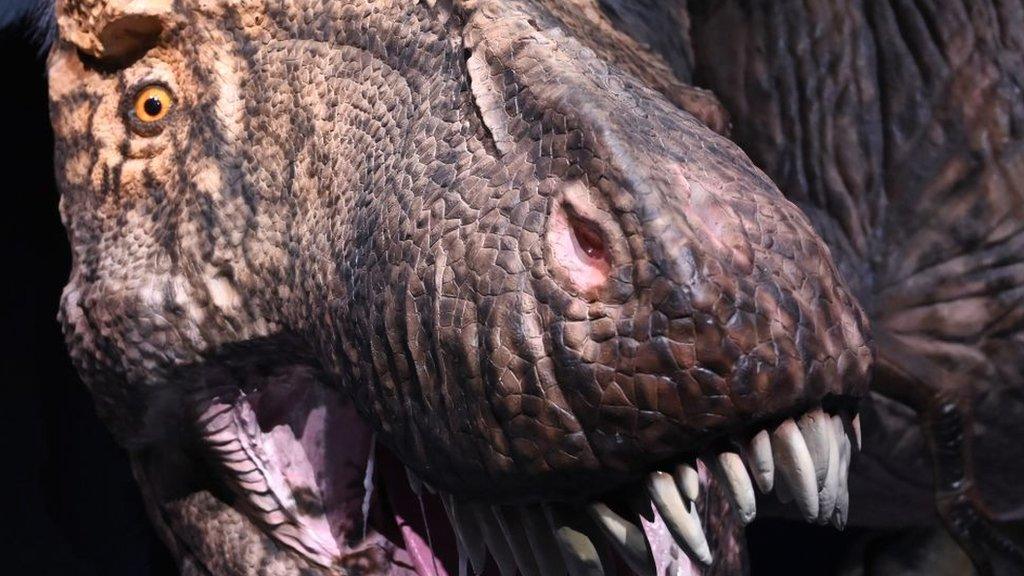Bones like bike spokes helped make dinosaur's long neck strong
- Published
- comments

Pterosaurs are known for having had necks that were longer than a giraffe's, but up until now, exactly how the dinosaurs were able to support their necks while taking off and flying around with their heavy prey has remained a bit of a mystery.
Now, scientists believe they may have discovered the secret to the pterosaur's incredible neck strength.
New scans of remains found in Morocco revealed spoke-like structures - similar to that of a bicycle - arranged in a corkscrew or spiral style formation within a central tube inside the reptile's vertebra. This unique structure is thought to be the answer for the pterosaur's super strong neck.
Experts say this complex design shows how these flying reptiles evolved to support their massive heads that were often longer than 1.5 metres!
This provided the creatures with the strength they needed to hunt and capture their prey in their mouths, while also allowing them to travel effortlessly through the air.
"It is unlike anything seen previously in a vertebra of any animal," said Dave Martill who is a professor of palaeobiology at the University of Portsmouth.
"The neural tube is placed centrally within the vertebra, and is connected to the external wall via a number of thin rod-like trabeculae, radially arranged like the spokes of a bicycle wheel, and helically arranged along the length of the vertebra.
"They even cross over like the spokes of a bicycle wheel. Evolution shaped these creatures into awesome, breathtakingly efficient flyers."

The pterosaur's neck contained spoke-like structures arranged in a corkscrew style formation within a central tube
The researchers had originally planned to only study the shape and movement of the pterosaur neck, but the CT scan provided them with an opportunity to carry out more in-depth research.
"[The pterosaur] makes a giraffe look perfectly normal," said Cariad Williams, who worked on the report.
"We wanted to know a bit about how this incredibly long neck functioned, as it seems to have very little mobility between each vertebra."
Analysis revealed that as few as 50 spokes in the pterosaur's neck could have helped lead to a 90 percent increase in resistance to buckling.
It's now thought that copying the super intricate construction of the reptile's neck bones could help engineers to develop longer, thinner and stronger lightweight structures.
- Published22 March 2018

- Published23 April 2019

- Published2 January 2020

